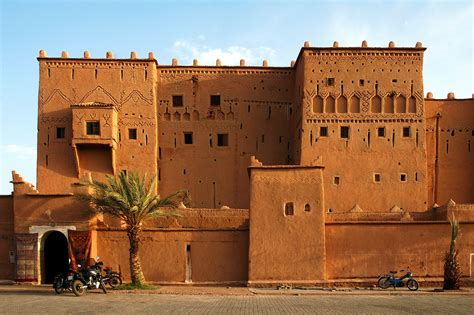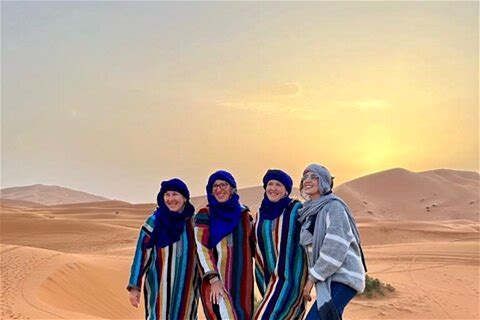
Historical Cities of Morocco
Morocco is home to several historical cities that encapsulate its rich past and cultural diversity. Marrakech, known for its vibrant souks and the iconic Koutoubia Mosque, serves as a gateway to the country’s storied history. Fez, the spiritual heart of Morocco, boasts one of the world’s largest car-free urban areas, the winding streets of Fes el Bali. This ancient city is famous for its medina and the stunning Bou Inania Madrasa. Meanwhile, Rabat, the capital city, features a blend of modernity and history with landmarks like the Royal Palace and Hassan Tower. Each city tells a part of Morocco’s story through its architecture and cultural traditions. For more insight into Morocco’s historical narrative, explore resources available on Merriam-Websteror ICTJ. As visitors explore these cities, they not only witness stunning works from different epochs but also engage with local customs that continue to thrive in contemporary life.

Stunning Moroccan Architecture
Moroccan architecture reflects the country’s rich history and diverse influences, showcasing a blend of Islamic, Berber, and French design elements. The use of intricate tile work, known as zellij, is a hallmark of Moroccan structures, adorns palaces, mosques, and fountains. A prime example is the Koutoubia Mosque in Marrakech, featuring stunning minarets that rise majestically against the skyline.
Additionally, traditional Riads—courtyard houses—offer a glimpse into Moroccan domestic life with their serene inner gardens and elaborate stucco decoration. As you explore the vibrant streets of Fez or Meknes, you may notice the impressive gates like Bab Mansour that highlight the craftsmanship of past artisans.
“Architecture is an expression of values; in Morocco, it embodies a fusion of cultures.”
Visitors should take time to appreciate not just the beauty but also the historical significance behind each structure. For travelers considering a visit to Morocco’s architectural wonders, staying informed on travel advisories can enhance your experience. Check out Morocco’s travel advisoryfor important information. Additionally, for a broader understanding of Morocco’s cultural context and modern demographics, visit the CIA World Factbook on Morocco.
Vibrant Moroccan Markets
Morocco’s markets, known as souks, are bustling centers of commerce that reflect the country’s rich cultural fabric. Visitors can explore maze-like alleyways filled with vibrant textiles, intricate ceramics, and aromatic spices. Each market offers a unique experience; the souk in Marrakech is famous for its colorful carpets and traditional lanterns, while Fez is known for its artisan crafts and leather goods. Engaging with local vendors not only provides an opportunity to purchase unique items but also to witness traditional bargaining practices. Moreover, the ambiance of these markets is a feast for the senses, as vibrant colors and enticing aromas intertwine. The experience of wandering through these vibrant marketplaces is enhanced by the presence of rich Moroccan culture and captivating history. For more information about this enchanting destination, you can visit Wikipediaor explore cultural insights from Casbah Dance.

Exploring Moroccan Traditions
Morocco is a tapestry of traditions that reflect its rich cultural heritage and diverse history. The country’s customs vary by region, with Berber, Arab, and Andalusian influences shaping daily life. Family is at the heart of Moroccan society, evidenced by communal dining practices where dishes like tagine are shared among family and friends. Festivals, such as the vibrant Moussem, celebrate local saints and significant events, merging spirituality with cultural expression. Traditional music, seen in genres like Chaabi and Gnawa, adds rhythm to celebrations and rituals. Artisan crafts are also a significant aspect of Moroccan traditions; skilled craftsmen create exquisite pottery, textiles, and leather goods, embodying the artistic spirit of the nation. Visitors are often drawn to experience these traditions firsthand in local markets and during cultural events. For further exploration of Morocco’s trade agreements that support its economy and cultural exchange, see United States Trade Representative. Additionally, those interested in traditional storytelling can discover Moroccan narratives featured in films such as Casablanca.
Diverse Landscapes of Morocco
Morocco boasts a remarkable array of landscapes that cater to various preferences, making it a unique destination for travelers. From the majestic Atlas Mountains, where snow-capped peaks rise dramatically, to the vast Sahara Desert with its flowing dunes and stunning sunsets, the country’s natural beauty is enchanting. Coastal regions along the Atlantic Ocean and Mediterranean Sea provide picturesque beaches and charming fishing villages.
Here is a table summarizing key landscapes:
| Landscape | Description |
|---|---|
| Atlas Mountains | Known for their rugged peaks and scenic trekking routes. |
| Sahara Desert | Features golden dunes, unique oases, and rich nomadic culture. |
| Coastal Areas | Offers vibrant beaches and traditional seaside towns. |
The variation in climate across these regions also contributes to diverse ecosystems, attracting hikers, surfers, and nature enthusiasts alike. Each landscape invites exploration and provides insights into Morocco’s rich geographical tapestry. For more information about Morocco’s cultural heritage, you can visit Britannicaor learn about its international relations here.
Cultural Events in Morocco
Morocco is renowned for its vibrant cultural events that reflect its rich heritage and traditions. Festivals such as the Marrakech Popular Arts Festival showcase mesmerizing performances of music, dance, and theater, drawing visitors from around the globe. Similarly, the Fes Festival of World Sacred Music emphasizes spiritual connection through diverse musical expressions from various cultures. In addition to these large-scale events, local celebrations such as the Rose Festival in Kelaat Mgouna highlight traditional practices, where locals come together to celebrate the blooming of roses with parades and showcasing their culinary delights. These cultural events offer tourists a unique insight into Moroccan life, allowing for an immersive experience that connects them to the nation’s history and community spirit. With each festival unfolding in different cities across Morocco, they serve as gateways to understanding the country’s profound diversity and enduring legacy.
Cuisine: A Taste of Morocco
Moroccan cuisine is a vibrant tapestry of flavors and ingredients, reflecting the country’s diverse cultural influences. Renowned for its use of spices, such as cumin, coriander, and saffron, each dish tells a unique story. Traditional meals often feature tagines—slow-cooked stews that can include meat and an array of vegetables—served alongside fluffy couscous. Street food is also an integral part of Moroccan dining; stalls in bustling markets offer savory treats like deliciously seasoned kebabs and crispy pastilla, a sweet and savory pastry filled with spiced meat. Additionally, meal preparation is often a communal experience, showcasing the importance of hospitality in Moroccan culture. As visitors indulge in these culinary delights, they gain deeper insights into the nation’s traditions and values. This culinary journey serves as a bridge to understanding the broader cultural context of Morocco, seamlessly connecting with its historical cities and vibrant markets.
Unique Souvenirs from Morocco
When visiting Morocco, the vibrant markets offer a plethora of unique souvenirs that reflect the country’s rich heritage. Handcrafted pottery, adorned with intricate designs, is a popular choice for visitors looking to take a piece of Moroccan artistry home. Leather goods, especially from cities like Fez, are renowned for their quality; bags and slippers crafted from soft leather can make for both practical and stylish keepsakes. Additionally, Moroccan rugs are treasured for their craftsmanship and distinctive patterns, each telling a story of its own. Spices are another delightful souvenir, allowing you to recreate the flavors of Moroccan cuisine in your own kitchen. These souvenirs not only serve as mementos but also as reminders of the fascinating culture and traditions that define Morocco’s essence.

Be First to Comment